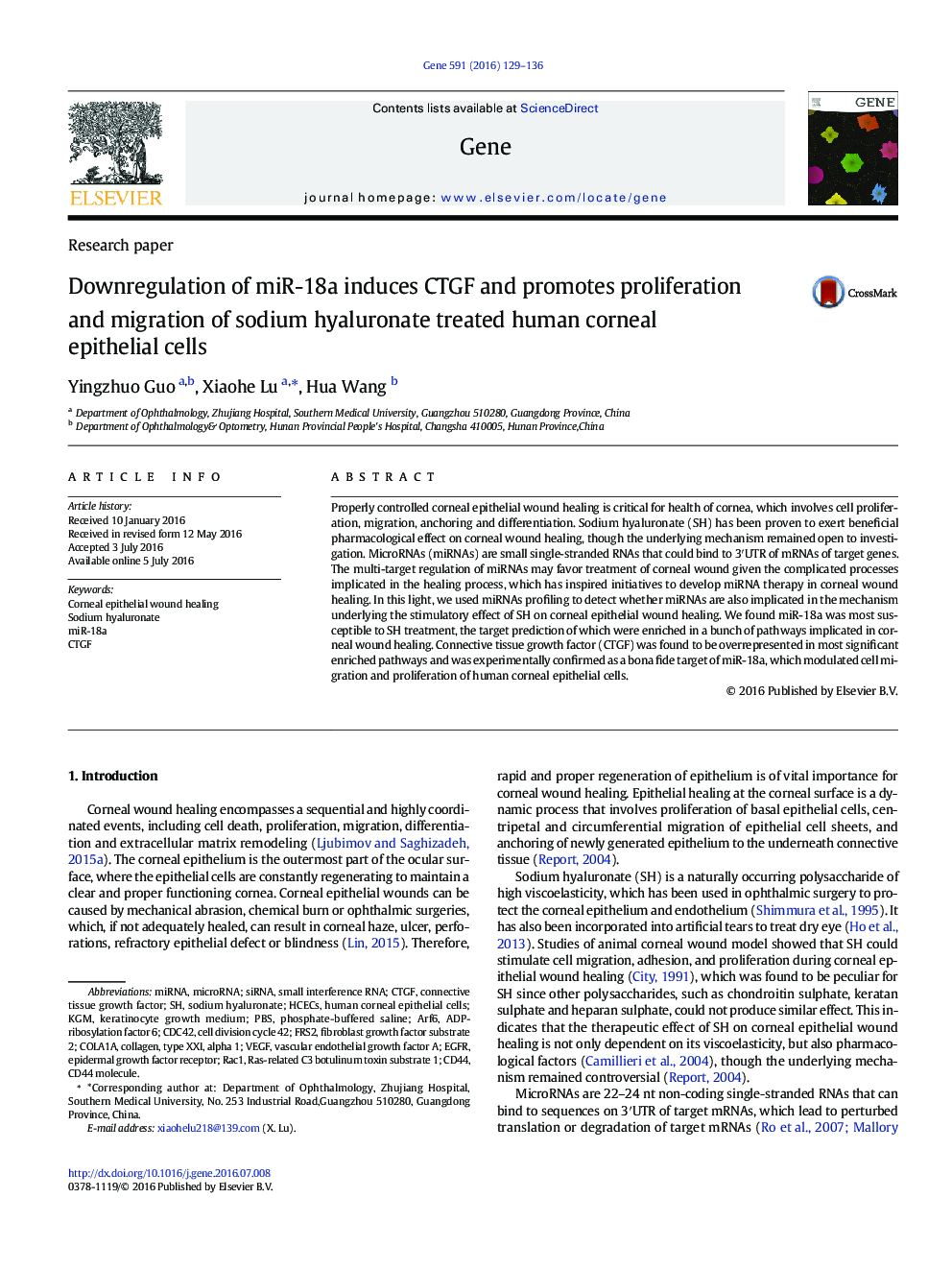| Article ID | Journal | Published Year | Pages | File Type |
|---|---|---|---|---|
| 2814826 | Gene | 2016 | 8 Pages |
•miR-18a and miR-92 are significantly downregulated in sodium hyaluronate treated human corneal epithelial cells.•miR-18a was identified as effector in the stimulatory effect of sodium hyaluronate on HCECs proliferation and migration.•Functional enrichment of predicted target of miR-18a identified multiple pathways implicated in cell proliferation and migration.•CTGF was identified as the functional target of miR-18a
Properly controlled corneal epithelial wound healing is critical for health of cornea, which involves cell proliferation, migration, anchoring and differentiation. Sodium hyaluronate (SH) has been proven to exert beneficial pharmacological effect on corneal wound healing, though the underlying mechanism remained open to investigation. MicroRNAs (miRNAs) are small single-stranded RNAs that could bind to 3′UTR of mRNAs of target genes. The multi-target regulation of miRNAs may favor treatment of corneal wound given the complicated processes implicated in the healing process, which has inspired initiatives to develop miRNA therapy in corneal wound healing. In this light, we used miRNAs profiling to detect whether miRNAs are also implicated in the mechanism underlying the stimulatory effect of SH on corneal epithelial wound healing. We found miR-18a was most susceptible to SH treatment, the target prediction of which were enriched in a bunch of pathways implicated in corneal wound healing. Connective tissue growth factor (CTGF) was found to be overrepresented in most significant enriched pathways and was experimentally confirmed as a bona fide target of miR-18a, which modulated cell migration and proliferation of human corneal epithelial cells.
